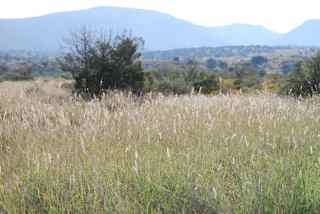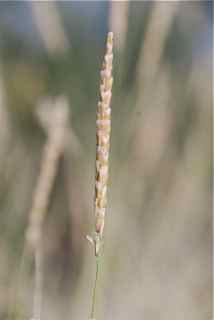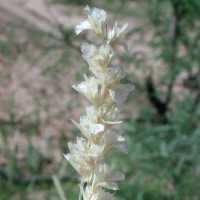|
|
 Plant - summer Rimrock Verde ValleyJohn Kava |  Seedhead Rimrock Verde ValleyJohn Kava |  Seedhead Max Licher @http://swbiodiversity.org, Usage Rights: Creative Commons Attribution-ShareAlike (CC BY-SA) | | | |
|
| | |
Origin: Native Season: Cool and Warm
Habitat Description: Dry, exposed, sandy or rocky slopes and plains, alluvial flats and swales, most abundant on heavy clay soils in swales that receive runoff water.
Plant Communities:Desert Scrub, Interior Chaparral, Semidesert Grasslands, Pinyon Juniper Woodland
Elevation: 2000 - 6000 feet
Similar Species: Pleuraphis jamesii
Desc:
Coarse perennial bunchgrass to 2 feet tall. Grows from a coarse scaly rootstock. Stems spread out at the base and then curve upward. Seedhead is a spike of 3 clustered spikelets at each node. Grayish when mature.
Identification Notes: Perennial, rhizomatous, slender wiry stems to 30 inches tall. Leaves mostly basal. Seedhead short spikes of 8 to 25 clusters of 3 spikelets that drop as a unit, leaving zig-zag seedhead stems. Hilaria jamesii has glumes that narrow toward the top.
Grass Type: Perennial mat or sod-forming Rhizomes: Y Stolons: N
Large Dense Clump (> 2 feet): Y Bushy (highly branched): Y
Height with Seedheads: 12 to 24 inches
Seedhead Structure: Unbranched Seedhead Droops: N
Flowering Period: Apr - Oct
Number of Flowers per Spikelet: Multi-flowered Spikelets One-sided: N
Awns: Less than 1/4 inch Three Awns: N Awns Bent: N
Flower and Seedhead Notes: Spikelets sessile (stalkless) in groups of 3 attached to the central axis, groups fall off the axis as one. First glume on each lateral spikelet is fan-shaped.
Blade Hairy:
Y
Blade with White Margins:
N
Blade Cross section:
Flat or involute
Blade Notes:
Blades to 6 inches long , stiff and hairless (occasionally with a few long hairs); mostly roughened with stout projections on both surfaces.
Sheath Hairy:
N
Tuft of Hairs at top of Sheath or Collar:
Y
Ligules:
Membranous and hairy
Auricles (Ear-like lobes at collar area:
N
Forage Value:
Good to fair for cattle and horses, fair for sheep, poor for wildlife, becomes relatively unpalatable when mature. Due to its coarseness it is lightly utilized.
|
|